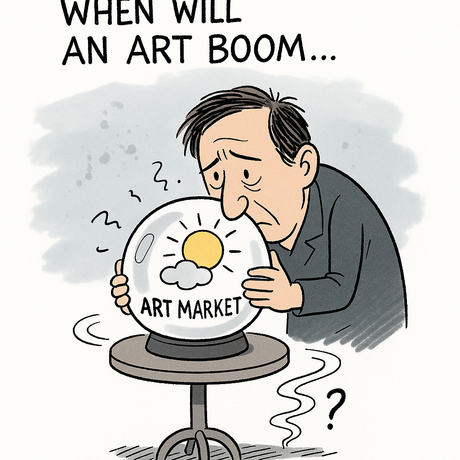Hans Peil can't help but laugh today when he recalls how the sculptured heads and names adorning his building's facade meant nothing to him when he purchased the property in 1994. Located in Görlitz, a city renowned for its magnificent historic buildings dating back to the Renaissance era, the purchase seemed promising in the years following the fall of the Berlin Wall. However, the restoration project proved more challenging than anticipated, with crumbling plaster on most buildings and few structures meeting modern standards.
Peil initially invested in the Wilhelmine-era residential building hoping to generate modest returns after renovations. The dilapidated factory building in the courtyard, damaged by both time and youthful vandalism, was included in the purchase price. Only later, after discovering a brief mention of his property in a Christmas gift coffee table book about Görlitz, did Peil uncover the building's fascinating connection to photography history.
The structure had originally housed Herbst & Firl, a company that manufactured cameras from 1892 to 1919. After World War I, Meyer Optik rented space in the building for several years. This period represented the golden age of Görlitz's optical industry, when the city was a major hub for camera manufacturing. The Curt Bentzin company developed the Primarflex camera here, which many claim was later copied by Hasselblad and brought to international fame.
At its peak, nearly 100 companies in Görlitz were involved in camera production, including suppliers such as precision mechanics specialists for fittings and leatherworkers for the bellows of old folding cameras. Even until German reunification, the state-owned VEB Feinoptisches Werk Görlitz, operating as part of the Carl Zeiss Jena combine, continued producing lenses for the East German Praktica camera series.
Eventually, Peil realized the significance of the three figures gazing arrogantly across the street from between the first-floor windows of his building: William Fox Talbot, Louis Jacques Mandé Daguerre, and Joseph Nicéphore Niépce – the three inventors of photography. Having completed his art studies at the Berlin University of the Arts in 1972 as a master student under Hermann Bachmann, Peil gathered with his circle of artist friends to discuss what they owed to the building's legacy.
Their ambitious plan resulted in the establishment of a photography museum, despite having no collection or concrete concept initially. In winter 1999, the founding assembly of the Society of Friends of the Photography Museum took place, with twenty to twenty-five people signing up as charter members. However, enthusiasm soon gave way to the reality that photography, like art in general, while beautiful, requires significant work and dedication.
Peil's background proved invaluable during this phase. His post-graduation training in public relations seminars and later work as an independent consultant helping medium-sized businesses obtain funding from the Ministry of Economics provided essential skills. Berlin collector Werner Umstätter provided crucial support, spending a year demonstrating on the building's first floor how such a museum might function using his own materials.
As word spread throughout Görlitz about the museum project, donations began arriving from unexpected sources. Despite initial claims that nothing remained of the city's photographic tradition, historical cameras of impressively massive proportions, small-format cameras made obsolete by digitization, and complete darkroom setups were contributed. Peil eagerly accepted these donations, particularly the darkroom equipment, which allowed school classes to develop their own films and create prints.
Sufficient material quickly accumulated to comprehensively tell the technical development story of photography in the newly renovated ground-floor shop space of the front building. However, little thought had been given to displaying actual photographs. This changed dramatically when the museum was mistakenly contacted from Berlin about taking over a comprehensive retrospective of legendary photojournalist Robert Lebeck.
Boldly accepting the challenge, the team hastily and makeshift renovated a floor of the half-collapsed factory hall and organized a magnificent opening celebration for the photographer and his Berlin entourage. This success led to ongoing support in securing new exhibitions, though unfortunately not in finding sponsors. The steel mesh panels hastily erected to hang Lebeck's photographs – typically used to reinforce concrete floors – remain standing today as something of a house landmark, even though other floors have since been carefully renovated.
Over the past twenty years, nearly 100 exhibitions have been housed in the carefully expanded spaces. The diversity of programming is evident in one of the current exhibitions celebrating the museum's anniversary, displaying promotional posters for almost all past presentations. The earliest posters are missing because, as Peil admits with a shrug, "We hadn't expected to last this long." At nearly eighty years old, he continues to curate the museum's programming.
Recent exhibitions have included Michael Dressel's dark commentary on American society titled "The End is Near, here – A Front Row Seat in Hell," followed by Berlin photographer Matthias Leupold's latest series "From the Group Photo of Christiane P.," which re-stages images and memories of his East Berlin childhood under dictatorship conditions. Peil doesn't always make things easy for visitors with his presentations.
The museum's success lies in its extremely diverse programming, alternating and complementing works by internationally recognized photo artists with amateur photographers from Görlitz and the Lausitz region. This approach maintains contact with local audiences while attracting city tourists, who are plentiful in Görlitz. The city's restored old town regularly serves as a backdrop for film and television productions, including movies like "The Grand Budapest Hotel," "Inglourious Basterds," "The Reader," and "The Book Thief," leading to international marketing as "Görliwood."
Peil embraced this cinematic connection by bringing Berlinale photographer Gerhard Kassner and his portraits of international film stars to the museum. A little glamour occasionally benefits even provincial locations, though Talbot, Daguerre, and Niépce maintained their stoic expressions throughout.
The supporting organization has dwindled over the years to just two volunteer members handling all operations. As photography itself faces challenges from AI and digitization, this dedicated Görlitz museum continues searching for new paths and possibilities to preserve and celebrate the medium's rich heritage.































